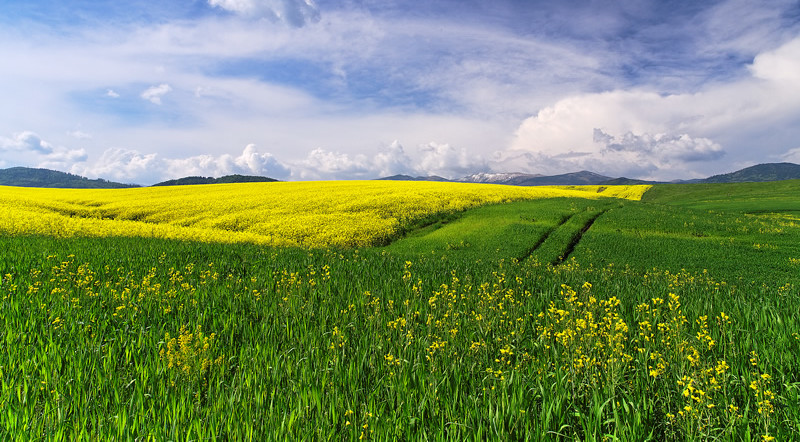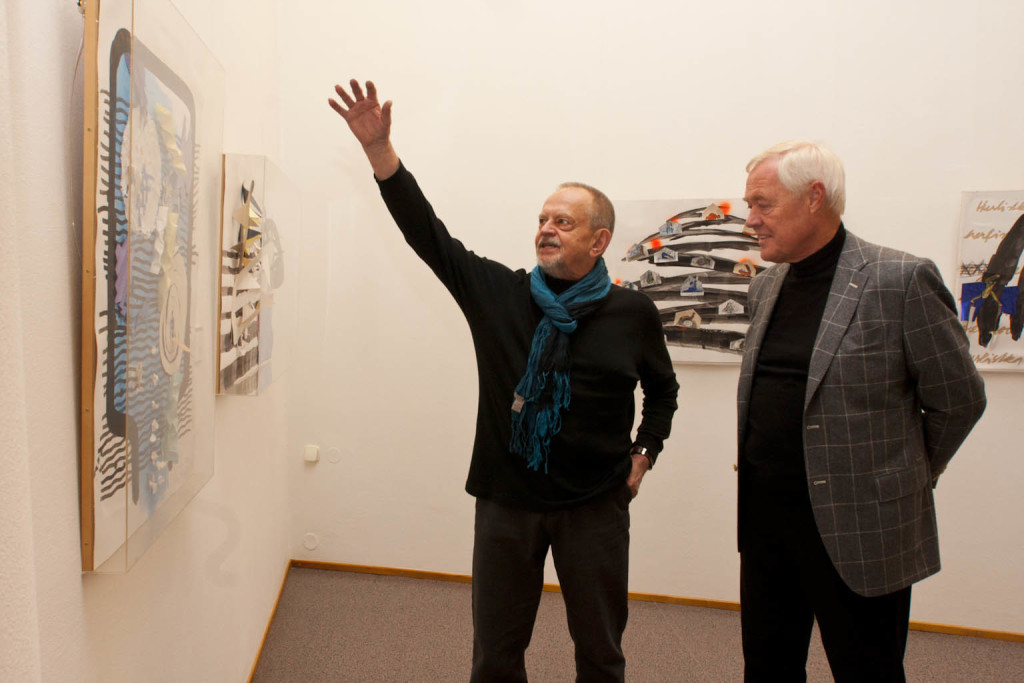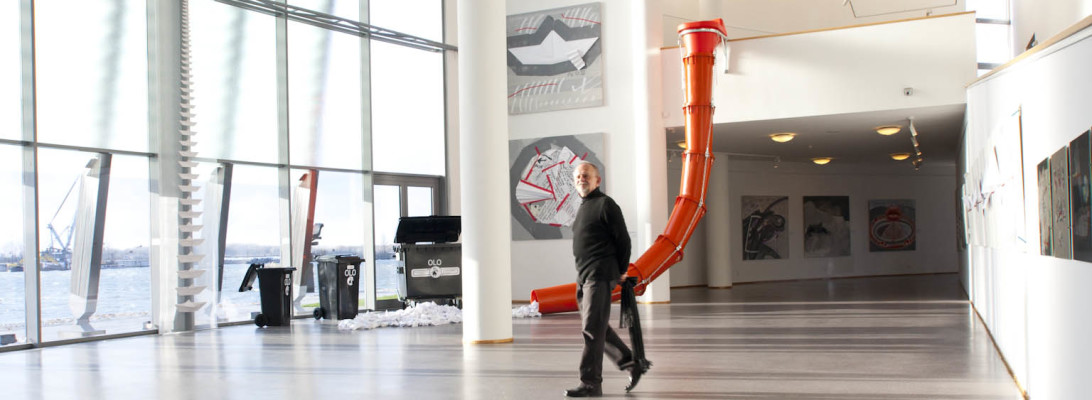Vladimír was born in 1939 as the eldest son into a family of shopkeepers in eastern Slovakia. His early childhood had the shadow of WWII cast over it, followed by the rebuilding period of the Stalinist era communism of the early fifties.
After the war, the family moved to the regional town of Kežmarok and settled there. Vladimír’s childhood in eastern Slovakia, at the foothills of the High Tatra mountains, strongly reverberates throughout the artist’s work. Even if rarely through landscapes, but more often through colours of grey stone and yellow bloom of rape, angular shapes of rocks, patterns of fields and winding serpents of roads and alleys of trees.

Vladimír learned to play violin and started to sketch and paint, particularly when forced to convalesce by a touch of tuberculosis in 1952. By the time he was 16 he knew that he wanted to go to Bratislava, the capital of Slovakia, to study at the Arts and Crafts School.
Once living in Bratislava he was drawn into the artistic and bohemian way of life that was emerging in the city, and in 1959 was accepted as a student at the Slovak Academy of Fine Arts. The sixties saw Vladimír shine as one of the most talented students producing cutting edge and innovative work as part of the pan-European artistic avant-garde. Vladimír married a fellow artist, Katarína Šujanová, in 1962 and his son, Andrej, was born two years later.
The loosening of the political atmosphere in Slovakia which nurtured the growth and freedom of arts came to an end in August 1968 when the Soviet Army invaded and occupied the country, and replaced the government. A mostly dark period in Vladimír’s creative output followed, with private works of great emotional impact as well as public statements including a statue of the giant Catapult (1970) as a symbol of the struggle between the political David and Goliath – Soviet Union and Czechoslovakia.
Vladimír slowly found his way and split his creative output between the occasional, but financially necessary works for public buildings, approved, though not always understood by the regime, and the private production in his studio. However, he never sold out to the regime’s ideology and as such lived on the fringe of the officially sanctioned cultural life in the country. To keep his perspective he used every opportunity to travel abroad and obtained inspiration from his visits to Yugoslavia, Greece, France, Germany, Japan and Cuba.
In 1975 he suffered serious injuries in a car accident, it took more than a year and several operations before he could walk again unaided. He had his second child, Alexandra, in 1977. With the advent of the eighties, the corruption of the regime became unbearable but the end of it was still unthinkable. This was the time of the bleakest, monochromatic production by Vladimír, taking another steep dive when his son defected to the UK in 1984.
The Velvet Revolution of 1989 turned everything upside down and Vladimír was shortly invited to join the new lecturing team at the Slovak Academy of Fine Arts and Design. His contribution to art was recognised by the publication of his Monograph and the “Grand Restrospecive” exhibition held at the Slovak National Gallery in 2002, and by being made a Professor at the Academy.

After 17 years of teaching Vladimír retired from the Academy to concentrate on his personal creativity. This was attested by his landmark solo exhibition at the Danubiana Art Museum which opened in December 2010 to universal critical acclaim. He continues to live and work in Bratislava.
